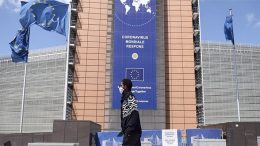European economy
The Poisoned Gift Of The European Agreement: The Euro’s Appreciation
Intermoney | Unlike the last crisis, Europe does not want to make an example of any country and Germany has sided with the stimulus and economic revival. This has been a turning point and has allowed the EU to gain a vote of confidence. However, it also has negative side effects in the form of the appreciation of the euro to 1.154 against the dollar on the day the agreement was announced. This was equivalent to highs not seen since January 2019.
New EU Budget Cuts CAP By 10% But Strengthens Regional Funds
On last Tuesday, leaders agreed on a Multiannual Financial Framework (MFF) of €1.074 Bn for 2021-2027. The European Union budget for the next seven years cuts agricultural funding by 10% compared to the previous Community financial framework, with the amount now standing at €343.9 Bn. Meanwhile, the allocation of cohesion funds has been boosted by 2.7% to €377 Bn.
EU Debt Issuance To Fill Gap In Shortage Of European High Quality Bonds
Intermoney | EU supranational entities’ negotiable debt in euros which can be attractive for investors amounts to nearly 588 billion euros. This figure seems low in line with the gross emissions of the EU, the ESM, EFSF and EIB which, together, have averaged 67 billion euros between 2015 and 2019. These numbers are evidence of the fact that the markets in the EU are lacking a key element such as the supranational role of quality. Furthermore, the Recovery Plan largely dilutes the break-up premium of the European project, and this may generate an extra boost for EU equities in the coming months.
Savings And Covid-19: How Far Will Europe’s Saving Fever Go?
Caixabank Research |The increase in bank deposit volumes in European economies indicates a substantial increase in savings. The «pent-up savings» effect resulting from the lockdown is expected to be quickly undone, but saving driven by uncertainty will persist until the outlook improves. Both saving patterns during the 2008 financial crisis and a statistical exercise suggest a high increase in the euro area’s savings rate in 2020, which will be partially undone in 2021. This phenomenon could be particularly accentuated in the economies hardest hit by the COVID-19 outbreak.
A Lot of Light And Some Shadow In The First European Debt Mutualisation Device
For the first time in its history, the European Union will take on debt to finance an extraordinary economic stimulus composed of 390 billion euros in grants and 360 billion in loans.It has finally managed to put together a European instrument for sharing debt. Equally important, the plan sends a signal to markets that the EU remains united in response to existential threats. However, the price for achieving the agreement has been high: maintaining the rebate cheques, renouncing of strict control as far as respecting the rule of law mechanism in the management of EU funds, increased conditionality and the fact the fund cannot work completely without ECB’s support.
Across Europe, Imaginary 5G Threats Create Real-World Headaches
European News | All of a sudden, a raft of new sensational stories emerged: 5G is responsible for causing COVID-19; 5G is spreading the virus at lightning speeds; 5G is a front for a global ploy to inject us all with a “vaccine” designed to track our movements. Such speculation borders on the absurd, but its consequences are no laughing matter. Since January, there have been over 140 attacks on telecoms infrastructure across 10 European countries, with 87 incidents taking place in the UK alone.
How To Make The Most Of The European Recovery Fund
Morgan Stanley | For the time being, the Fund is still only a proposal and there remains a wide divergence of views about the amount, duration, allocation, grants/loans etc. We assume that the final outcome will be in line with the Commission’s proposal: €750 Bn in joint issuance (500 Bn in grants and 250 Bn in loans). As regards to the use of the funds, the optimal scenario would be one where spending is applied via investment since it has a higher fiscal multiplier (vs for example a corporate tax cut or transfers).
Europe Is Gaining Ground: Eurozone’s Activity Reaches 92% Of Pre-Crisis Level; The US Stagnates At 67%
David Kohl (Chief Economist Germany, Julius Baer) | Lower new infection rates in Europe and a swifter recovery of activity are valid reasons to scale back some pessimism regarding the eurozone growth outlook. The eurozone has ramped up its fiscal response to the corona pandemic. We feel comfortable in expecting for the region a more moderate contraction of -7.2% in 2020.
ECB Preview: The Economy Continues To Recover And The Inflation Outlook Is Muted.
Peter Allen Goves (MFS Investment Management) | The overall macro picture has not changed significantly since the June meeting. The economy continues to recover and the inflation outlook is muted. We still see enough flexibility in the Pandemic Emergency Purchase Programme (PEPP) to combat any unwarranted tightening in financial conditions. The June targeted longer-term refinancing operation (TLTRO) was a successful exercise and the extra liquidity added (around €550bn) is seen as enough to support the private sector into the recovery phase (or at least reduce liquidity crisis). Overall, we do not believe there is a strong need for further action from the European Central Bank (ECB) at the current juncture. If anything, the ECB communication will be closely watched.










